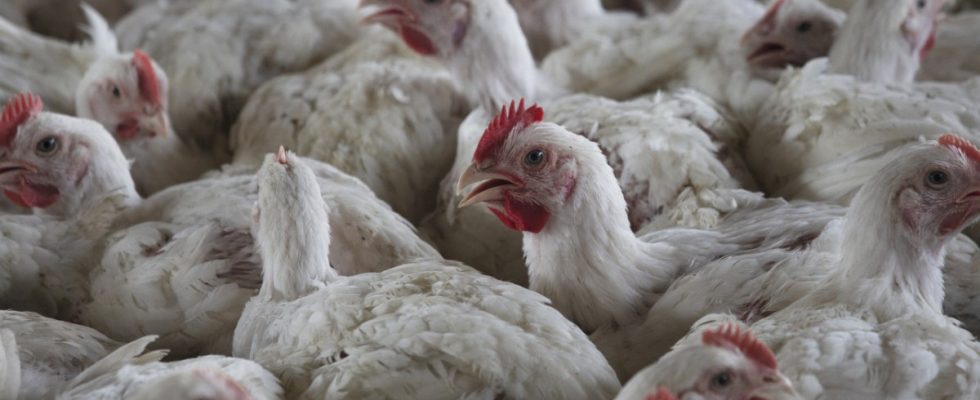With a small intervention in the genetic material, biotechnologists have succeeded in making chickens resistant to bird flu pathogens. Like the team around Alewo Idoko-Akoh and Mike McGrew from the University of Edinburgh in the journal Nature Communications reported, created by exchanging a gene in the germ cells of birds, which hardly reacted to normal doses of the pathogen. Nine out of ten of these chickens did not become infected with low viral loads. However, as the viral load in the laboratory tests increased, resistance decreased. Otherwise, the animals would not have differed from other chickens over the two-year study period, according to the specialist article.
Bird flu is a global problem; the pathogen no longer only threatens poultry in breeding and fattening farms, but also wild populations on every continent, and also has the potential to unleash a pandemic among humans. Currently, variants of the H5N1 influenza virus are causing unprecedented bird deaths in the wild and on poultry farms in Europe, Asia, Africa and America, said study leader McGrew during a press conference. There are also deaths in mammals such as seals and, in isolated cases, in humans. Vaccinations of poultry therefore do not offer reliable protection against the mutation-prone pathogens.
The researchers led by Idoko-Akoh and McGrew used genome editing to replace two amino acid building blocks of the chicken protein ANP32A, which is central to the replication of viruses in birds. Since the changes were made in the animals’ germ cells, they pass them on to their offspring. There are two other gene variants of the ANP32 protein in the chicken genome. Experiments on cells showed that the viruses no longer stand a chance if all three were changed – but that would probably be fatal for the animals, as the proteins are also important in cells that cannot be infected by the viruses. Independent experts praise the work of the team around Idoko-Akoh and McGrew as a successful feasibility study, which clearly shows what could currently be achieved in this way – but also what problems this approach could bring with it.
Could this create viruses that are more dangerous to humans?
The experiments showed, for example, that viruses that were able to multiply without a suitable ANP32A protein carried mutations that – “unexpectedly”, as the researchers write – allow them to also multiply in cells of the human respiratory tract. In this respect, the advantages of chickens, which are partially resistant to bird flu, are obvious, says James Wood, head of the department of veterinary medicine at the University of Cambridge. But the ability to select for viruses that could be more dangerous to humans is “something that should be avoided.” It is important to achieve complete resistance against different bird flu genotypes.
It is still unclear how this will be achieved without compromising the health of the chickens. In addition, it is not so much chickens that are driving the bird flu pandemic, but rather wild birds that carry the virus around the planet. Protecting them from the pathogen through genetic modifications would not be possible, even if it were clear how to do this without harming the animals.
If at least this were somehow successful, it would already be a significant contribution to protection against a bird flu pandemic among humans. Because if farmed poultry can no longer become infected, the likelihood of people who work with the birds becoming infected decreases. This would be particularly important if viruses became established “that had a significantly higher tendency to zoonotic transmission than those currently circulating,” says Timm Harder, laboratory manager at the Institute for Virus Diagnostics at the Friedrich Loeffler Institute. However, under current EU law, such animals would be considered genetically modified organisms. Their use would require approval and keeping them would only be possible in a genetic engineering facility. “Free-range farming would then be equivalent to a release project,” says Harder. “Without appropriate legal adjustments, mass use would certainly not be conceivable.”
With material from dpa and the Science Media Center

